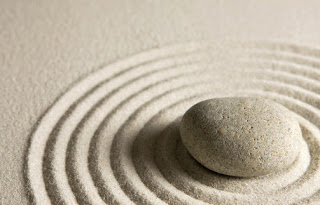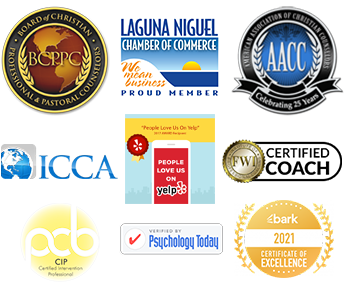
By Randy Moraitis, MA, CIP, BCPC
Job stress is both a real and a growing problem. Current research shows that 30% of U.S. workers are often or always under a lot of stress at work.
People who have a high level of occupational stress have up to three times the rate of back pain–usually lower back pain. Research also shows that high job stress doubles the risk of death from heart disease and was associated with increased cholesterol and body mass index. So it’s a big problem affecting millions of people and needs a solution.
One way to help combat job stress and prevent burnout is to do some perspective shifting, so let’s give it a try.
Start by making a decision about whether you have a gas tank or you have solar panels.
Gas Tank Mindset
 Imagine a person goes to work tomorrow and has a very busy day. They start the day dealing with their first task, it’s challenging but they succeed. This burns a little fuel from their gas tank. As the day progresses they deal with multiple issues, problems and tasks, each draining more fuel from their tank.
Imagine a person goes to work tomorrow and has a very busy day. They start the day dealing with their first task, it’s challenging but they succeed. This burns a little fuel from their gas tank. As the day progresses they deal with multiple issues, problems and tasks, each draining more fuel from their tank.By the end of the long, hard work day they’ve completed all of their tasks and duties, but now their gas tank is empty and they’re exhausted. So they go home to their family exhausted.
Solar Panel Mindset
In that moment where they focus on the privilege of connecting with others and making a difference, the thought radiates on their solar panels and they feel charged. They carry this perspective throughout the day and by the end of the work day they may be physically tired but their soul feels charged. And that’s what they take home to their family.
So you decide. Do you have a gas tank or solar panels?
I would love to hear your thoughts or experiences with job stress. Email me at randy@randymoraitis.com. Websites: www.randymoraitis.com and www.carepossible.org.
About Randy Moraitis
Randy is married to Kim and they live in Laguna Niguel. Together they have a blended family of five adult children and three beautiful grandchildren. (If you don’t believe Randy he will gladly show you pictures!)
Randy is a Certified Intervention Professional (CIP) and expert in helping families affected by addiction and/or mental health issues. He is a Board Certified Pastoral Counselor and is both licensed and ordained as a pastoral counselor. He has five professional coaching certifications and loves working with clients on executive coaching, life coaching, wellness coaching and recovery coaching. Randy has a master’s degree with emphasis in theology and counseling, a bachelors degree in management and leadership, and a certificate in health and fitness with emphasis in exercise physiology and sports psychology from UC Irvine. He has been helping groups, individuals and families get mentally, physically and spiritually healthy in Orange County for over 25 years.




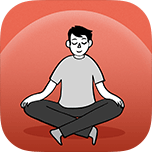 1. Stop, Breathe & Think–This is a great, free app that has a 5 star rating and is a Webby Award Winner. I love this app and use it myself for relaxation and meditation. I also have many of my counseling and coaching clients use this app with great success.
1. Stop, Breathe & Think–This is a great, free app that has a 5 star rating and is a Webby Award Winner. I love this app and use it myself for relaxation and meditation. I also have many of my counseling and coaching clients use this app with great success.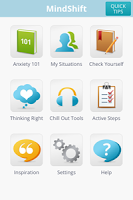 3. Mindshift–This app is specifically designed for those struggling with anxiety. Although not as highly rated as the above apps, my experience is that counselors love what this app does for their clients as a tool for managing and working through anxiety. The app includes a section on situations that trigger anxiety and how to have healing, as well as some great “chill out” tools and Twitter-worthy inspirational quotes.
3. Mindshift–This app is specifically designed for those struggling with anxiety. Although not as highly rated as the above apps, my experience is that counselors love what this app does for their clients as a tool for managing and working through anxiety. The app includes a section on situations that trigger anxiety and how to have healing, as well as some great “chill out” tools and Twitter-worthy inspirational quotes.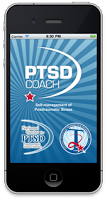 4. PTSD Coach–This is a great app that was developed by the Department of Veteran Affairs National Center for PTSD. Although originally intended for use by vets with PTSD, a quick read through the reviews shows that many civilians have been helped by this app as well.
4. PTSD Coach–This is a great app that was developed by the Department of Veteran Affairs National Center for PTSD. Although originally intended for use by vets with PTSD, a quick read through the reviews shows that many civilians have been helped by this app as well. 5. Optimism–This is a 4 star rated app that helps users with self-tracking as a tool for coping with mental health issues such as anxiety, depression, bipolar disorder and PTSD. The app allows users to create a custom wellness plan and is particularly useful when the user is working with a mental health professional.
5. Optimism–This is a 4 star rated app that helps users with self-tracking as a tool for coping with mental health issues such as anxiety, depression, bipolar disorder and PTSD. The app allows users to create a custom wellness plan and is particularly useful when the user is working with a mental health professional.